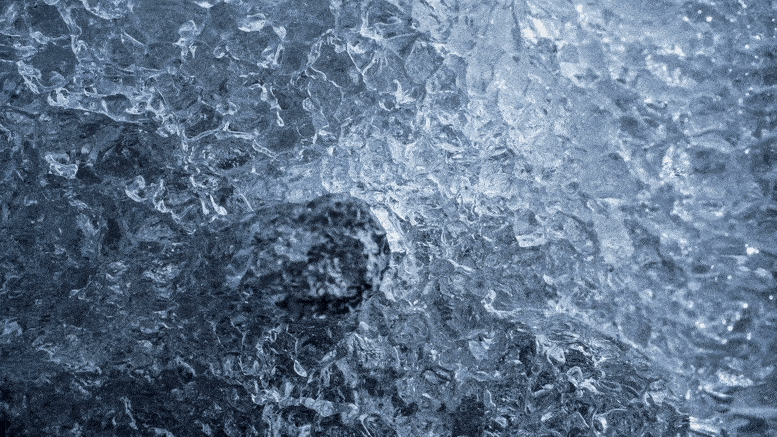
For the first time, researchers were able to obtain data from under the Thwaites Glacier, also known as the ‘Doomsday Glacier’. They find that the supply of hot water to the glacier is greater than previously thought, causing it to melt faster and accelerate ice flow.
With the help of the unmanned submarine Ran that ran under the Thwaites Glacier Front, the researchers made a number of new discoveries. Professor Karen Heywood of the University of East Anglia said:
‘It was Ran’s first venture to polar regions and her exploration of the waters under the ice shelf was far more successful than we had ventured. We plan to build on these exciting findings next year with further missions under the ice. ”
The immersion measured, among other things, the strength, temperature, salinity and oxygen content of the ocean currents that go under the glacier.
Global sea level is affected by the amount of ice on land, and the biggest uncertainty in the forecasts is the future evolution of the West Antarctic ice sheet, says Anna Wåhlin, professor of oceanography at the University of Gothenburg and lead author of the new study which is now published in Science Advances.
Impact global sea level
The ice sheet in West Antarctica accounts for about ten percent of the current rise in sea level; but also the ice in West Antarctica has the greatest potential to increase the rate because the fastest changes are taking place worldwide in the Thwaites Glacier. Due to its location and shape, Thwaites are particularly sensitive to hot and salty ocean currents that find beneath them.

Photo of the unmanned submarine Ran. Credit: Filip Stedt
This process can lead to an accelerated melting at the bottom of the glacier and inland movement of the so-called grounding zone, the area where the ice transitions from resting on the seabed to floating in the ocean.
Due to the inaccessible location, far from research stations, in an area usually blocked by thick sea ice and many icebergs, there was a great shortage of in situ measurements from this area. This means that there are large knowledge gaps for the ice-ocean border processes in this region.
First measurements performed
In the study, the researchers presented the results of the submersible pump that measures the strength, temperature, salinity and oxygen content of the ocean currents that go under the glacier.
“These were the first measurements ever taken under the Thwaites Glacier,” says Anna Wåhlin.
The results were used to map the ocean currents below the floating part of the glacier. The researchers discovered that there is a deep connection to the east through which deep water flows from Pine Island Bay, a connection that was previously presumably blocked by an underwater ridge.
The research group also measured the heat transport in one of the three canals that carry hot water to the Thwaites Glacier from the north. ‘The channels for hot water to access and attack Thwaites were not yet known to us before the investigation. Using sonar on the ship, nestled with a very high resolution mapping of the sea from Ran, we were able to determine that there are different paths that take water in and out of the ice plank cavity, influenced by the geometry of the seabed, ‘says Dr. Alastair Graham, University of South Florida.
The value measured there, 0.8 TW, corresponds to a net melt of 75 km3 ice per year, which is almost as large as the total basal melt in the entire ice shelf. Although the amount of ice that melts due to the hot water is not much compared to other global freshwater sources, the heat transport locally has a large effect and may indicate that the glacier is not stable over time.
Not sustainable over time
The researchers also noted that large amounts of meltwater flowed north from the front of the glacier.
Variations in salinity, temperature and oxygen content indicate that the area under the glacier is a previously unknown active area where different water masses meet and mix with each other, which is important to understand the melting processes at the base of the ice.
The observations show how hot water arrives at fixed points from all sides, critical places where the ice is connected to the seabed and gives the ice shelf stability. Melting around these fixed points can lead to instability and retreat of the ice shelf and consequently the upstream glacier flowing from the land. Dr. Rob Larter of the British Antarctic Survey said:
‘This work emphasizes that how and where hot water affects the Thwaites Glacier is influenced by the shape of the seabed and the ice shelf base as well as the properties of the water itself. The successful integration of new seabed data and observations of water properties from the Ran missions demonstrates the benefits of the multidisciplinary ethos within the international Thwaites Glacier collaboration. ”
“The good news is that for the first time we are collecting data needed to model the dynamics of Thwaite’s glacier. These data will help us to better calculate ice melting in the future. With the help of new technology, we can improve the models and reduce the great uncertainty that now prevails over global sea level variations, ”says Anna Wåhlin.
Reference: April 9, 2021, Scientific progress.
